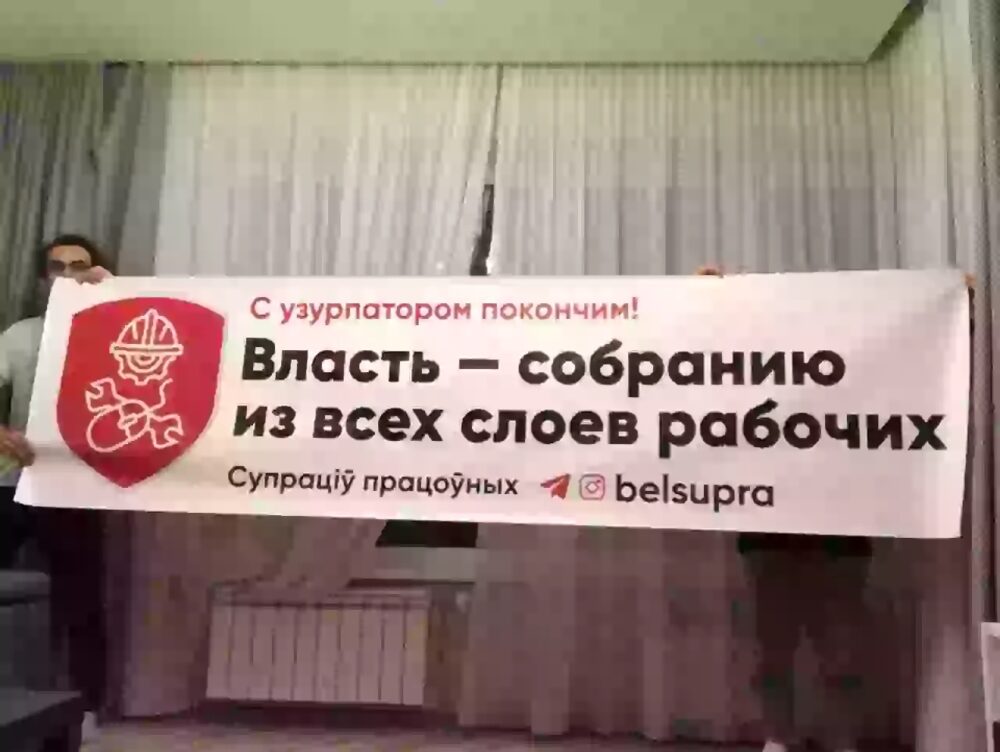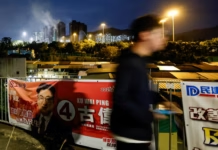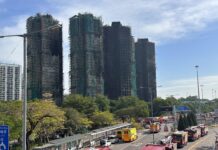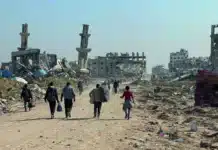The present stage and the tasks of socialists. Since 10 August 2020, heroic mass protests have shaken Belarus, refusing to succumb to the open terror used by the regime, police violence and mass arrests. What is now the way forward?
Supratsiwlenine Pratsownykh (Workers’ Resistance), ISA supporters in Belarus
Since 10 August, when the results of the Presidential election were announced and Alexandr Lukashenko claimed to have won over 80% of the vote, heroic mass protests have shaken Belarus. They have been met with police violence and mass arrests. To date over 30,000 have been arrested, many opposition activists have been forced to leave the country and others wounded by police action.
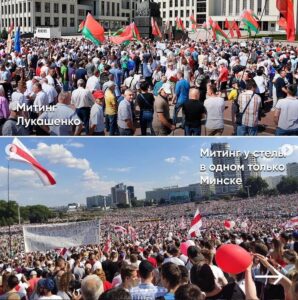
The clearly fabricated result of the election followed by the brutal police violence in the days after were the triggers that drew the masses into struggle. At the end of August, the working class responded to the violence with unorganized, spontaneous rallies and strikes. Even though the national strike eased after the police violence reduced, many segments of the working class and the oppressed joined the protests: factory workers, women, pensioners, as well as students, medical and education workers. As protesters sought new ways to organize, courtyard committees, based on the people who lived in the houses around the courtyards, began to play an important role.
Full-blown crisis of the Lukashenko regime
Alexandr Lukashenko has been in power since July 1994. His regime, up till now, has never been in such a deep crisis. In fact, the contradictions that led to this crisis have been accumulating over the past twenty years. Creeping privatization, cuts in the social budget and the impact of the global economic crisis have all played their part.
Workers no longer have security at work — they are employed on temporary contracts, while a reform of the pension system has recently been pushed through. A major attack, which led to mass protests in 2018 was the ‘tax on parasites’, a levy on the half a million unemployed, who the regime believes offer society nothing.
The anti-regime sentiments that were building up were exacerbated by the coronavirus. Lukashenko is a classic virus denier, suggesting it could be prevented using a shot of vodka.
The clear change in the mass consciousness before the election provoked a split in the ruling elite. Viktor Babariko, formerly Head of the BelGazprombank, a subsidiary of the Russian Gazprom and Valery Tsapkalo, who spearheaded Lukashenko’s presidential campaign in 1994 and then served in his government as Ambassador and then as Head of the Government-supported IT park, announced they would stand against him in the Presidential election. They were joined by the popular blogger Sergei Tikhanovsky. The regime responded by opening criminal charges against all three — Tsapkalo fled the country, the other two have been arrested. It was then left to Svetlana Tikhanovskaya to hold the opposition flag in the election.
The peculiar nature of Belarusian capitalism
Unlike in other countries of the former Soviet Union in the 1990s, the Lukashenko regime did not go down the path of ‘shock therapy’ based on mass privatization. He was able to do this only because Belarus is a key transit route for Russian oil and gas to Europe, and the income from this was used to keep the country’s economy afloat. Still in 2020, 40% of those employed in Belarus worked at ‘state enterprises’. Despite their status, there was no form of workers’ control or even involvement in running the plants, and nor are these enterprises bound by any state planning, as in Soviet times. These state-owned companies have to survive in the market system and act just like private companies. The state officials who run them, in essence, do not differ much from the oligarchs and big capitalists. They find various ways to put money in their pockets, transferring as little as possible to the budget.
The workers, not having proper independent trade unions, have no other option than to work in these plants on the conditions dictated by management. Lukashenko’s cannibalistic contract system disenfranchises workers even more, as they can be fired at any time and even be required to return part of their earnings. Employers take advantage of this situation to the full, suggesting that workers have the opportunity to find a more ‘honest “employer’ if they do not like something.
The superiority of the Soviet economy lay in the fact that it was based on state ownership and centralized planning, with a division of labor between the countries of the Soviet bloc. On this basis, the USSR was transformed from a backward, semi-feudal country to become the second world economic power. But bureaucratic mismanagement, the huge expenditure on the arms race and the upkeep of state officials, and most importantly, the lack of a workers’ democracy that could correct the imbalances in production and change the policies of the workers’ state eventually led to a full-blown crisis. When the bureaucratic strata, which was far detached from the masses, realized that they could gain more from the introduction of capitalism, they decided on restoration.
The collapse of the Soviet system left the Belarusian economy without the key element that drove the Soviet economy — central planning. Preserving a large public sector, the Belarusan regime could maintain an economy based on profits from oil and gas transit to and from Russia, i.e. actually receiving subsidies from Russia in exchange for close economic and diplomatic relations. Funds from oil and gas were used, on the one hand, to support the social budget and, on the other hand, to enrich the new oligarchs — Lukashenko’s friends and relatives. This system was more or less stable until it was hit by the global economic crisis. The Russian oil and gas oligarchs decided to raise prices for Belarus, which meant the beginning of the end for the whole Belarusian system.
Belarusian capitalism has nurtured plenty of dollar billionaires, the most famous of them being A. Milnichenko, D. Mizepin, A. Klyamko, V. Kisly, V. Peftiev. There are also more than 7 thousand dollar millionaires. Lukashenko is often called “Batska” (father in Belarusian) — he is certainly the father of Belarusian capitalism. No matter how much liberals imagine some other, honest capitalism, claiming that there is the “wrong type of capitalism” in Belarus, Lukashenko’s capitalism is the real one.
Prospects for the Belarusian economy
GDP began to fall even before the protests began. According to the latest forecasts, in 2020 it will have fallen by about 1.5–2%. Investment in industry has declined as those with money fear instability, while at least $1.5 billion in cash has been withdrawn from ATMs over the past six months. This has contributed to a decline in the value of the Belarusian ruble by about 10%, which has affected the purchasing power of wages and pensions. The $1.5 billion in subsidies allocated by Russia to bail out the government in this context are far from sufficient to solve the country’s problems.
Investors warn of their reluctance to invest as long as protests and instability continue, demonstrating once again that private capital cares only about making profits, and not about democratic rights. Even isolated from other, outside influences, the economy in this situation will remain stagnant.
If the protests subside for a while, and Lukashenko remains in power, it will not be easy for him to get out of this stagnation. Russia is unlikely to dramatically increase its subsidies, given the difficulties that the Russian economy is already facing.
There is also no likelihood of a serious increase in oil and gas prices in the near future, allowing the government to profit from transit. Lukashenko has no tools to overcome this crisis.
A proposal to speed up the privatization of key state companies has already been put forward. But privatization has stalled over the last decade, not because the government has no desire to implement the plans of the World Bank, but because of a general lack of capital ready to invest in Belarus. In this situation, the only possibility is to finally open up the economy to Russian capital. This, of course, is also an option, if someone like Babariko, who is close to Russian capital, comes to power. This would open up the economy to privatization and Russia’s general budgetary policy, based on further cuts in health care, education, and social welfare spending.
But little would have changed in the other scenario either, if a more EU-oriented leader had come to power. The same neoliberal prescriptions would be on the agenda: privatization and austerity. The Belarusian population has long been seen as close to Russia. Unlike in neighbouring Ukraine, there has not been a strong national question. Even during the protests, no pro-EU mood, as existed during Kiev’s ‘Maidan’ protests of 2013–14, was seen. However, the Kremlin’s intervention effectively in support of Lukashenko has led to a marked growth in pro-EU sentiment. At the end of the year a survey conducted by the ‘Belarusian Analytical Workshop’ showed a drop by 11% to 40% of those Belarusians supporting an alliance with Russia and a 25% increase to 33% of those for orientation towards the EU.
Belarus has long been part of the global economy, which is currently undergoing one of the worst crises in history. Class inequality, already at historically high levels, will continue to grow even in “developed countries,” and countries like Belarus will fall into widespread poverty.
Democracy, Bonapartism and capitalism
Any capitalist elite would prefer to rule by democratic means. It is not only cheaper. Having democratic institutions in the form of parliaments for the rich, courts to resolve intra-class competition, and protection of property, provides additional insurance for their rule. Such a system more often than not offers the possibility for neutralising working-class leaders by integrating them into state and political structures.

But such a democracy for elites is possible only when the oligarchs and the different strata of the capitalist class are able to agree among themselves, when they are not threatened by strike movements and mass discontent, and when the economy is on the rise. Otherwise, the elites can choose to rely on a Bonaparte, a dictator-arbitrator, who concentrates power in his own hands, using his own authoritarian methods to solve the problems of the whole class.
Such was Lukashenko in Belarus in the 1990s, a bureaucrat who was supposed to bring the restoration of capitalism to its logical conclusion. He followed a strategy of slow privatization that would not provoke violent resistance from the working class and working people, including intellectuals, many self-employed people and students. He spoke of a socially-oriented capitalism with national characteristics, allowing the emergence of the new capitalist ruling class, whilst using populist slogans to flirt with the working class as if representing its interests.
Under capitalism, there is no immunity from tyranny. Even in the most developed countries today, the democratic freedoms of the masses are under attack and authoritarian tendencies are on the rise. This process accelerated after the global economic crisis of 2007–8, and especially with the onset of the pandemic.
The state apparatus in modern “bourgeois democracies” — i.e. its officials, judges, military generals, parliamentary institutions — are neutral, only in the sense that they serve the interests of the entire capitalist class, and their loyalty is bought with high salaries, privileges and prestige. Much of this is legitimized as the capitalists have already laid down favorable rules of the game for themselves. But in times of economic crisis, the state apparatus begins to act against the impoverished masses or in the interests of individual sections of the capitalist class. The illusion of “democracy for all” begins quickly to disappear.
We are told that the alternative to Lukashenko’s Bonapartism is democracy, implying democracy for the ruling class. But it is not a way out, democracy on a capitalist basis will not solve the social problems, inequality, poverty.
Demands and leadership of the protests
Few expected Lukashenko to organize a fair election. But the announcement of the results, when he claimed more than 80% of the vote was the last straw. Dissatisfaction with the economic situation, the anti-working class reforms, and the lack of basic freedoms pushed the masses to protest. Driven by a desire for change, they began to demand the overthrow of the dictatorship.
What started out as peaceful and relatively calm protests were soon met with violent repression. The use of police violence, and especially when it was directed at workers, provoked anger in the large industrial plants. The demand to dismantle the regime was joined by calls to organize a “tribunal for the punishers,” and the slogan “freedom for political prisoners” began to be heard even louder.
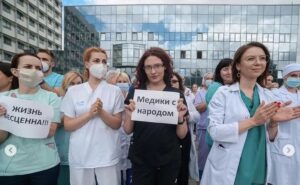
The various classes and layers that came out in protest had different motives. The liberal elite understood that the manipulation of the elections was a maneuver to prevent them from coming to power, on a wave of mass discontent. For the vast majority of the population — medical workers and those from heavy industry, many students, and young people etc — opposed the regime as they saw it as a continuation of the current disastrous economic and social policy. In the absence of the masses’ own organizations, especially those of the working class, it was the liberal elite who claimed to speak on behalf of all the protesters.
Because of their class position, the liberal elite has its own reasons for getting rid of this dictator leaning, if necessary, on the workers to do so. They do so in such a way that these workers do not become sufficiently independent and organized themselves, so that tomorrow they can turn against the new ruling elite — the capitalists and oligarchs — after Lukashenko. The opposition elite quickly organized the “Coordinating Council”, hoping that this body would take over power once the dictator had been driven out. At a certain point, with hundreds of thousands of people taking to the streets throughout the country, it seemed that it was only a matter of time. When Lukashenko began to stabilize the situation, the opposition began to fracture, creating other bodies, looking for ways to strengthen itself.
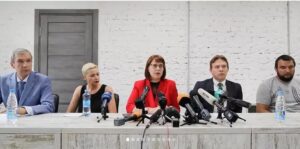
The various opposition elites who claim to speak on behalf of the protesters reflect the state of the liberal bourgeoisie itself in Belarus. Of all the political figures, only Tikhanovskaya, a generally accidental figure dragged into politics by coincidence, has been able to more or less grasp the mood of the protesters and engage in some kind of dialogue with them. She began to promise that if she won there would be some improvements for sections of the working class, but it was too late in the day. In the end the public ultimatum that she issued with a call for a national general strike in late October, intended to launch a decisive attack on the regime by the masses if Lukashenko did not resign, had little effect. The rest of the liberal elite, unable to offer the masses anything but further neoliberal policies, made no social or economic demands that could improve the position of the masses. In words they looked like protest leaders, but in reality they were not.
Could the movement have won at this stage?
If victory is defined as Lukashenko’s ousting or new elections, the protest movement could have won in the first weeks or even days of the movement, if the leadership had been at least partially competent, making clear calls based on a protest strategy. This would have meant involving people in discussing tactics, strategies, and demands, and in spreading mass agitation to convince even more people to join the struggle. For example, the working class at the factory rallies talked about the need to abolish the contract system and introduce open-ended contracts that would really protect workers, but none of the elites dared to promise to fulfill this demand. The Coordinating Council quietly released a document which spoke of “improving” (?) the contract system. In the end, the protest was simply framed as a weekly ritual demonstration.
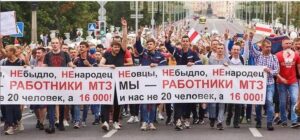
Towards the end of the year as the protests were ebbing, the opposition group Nexta, which owns the most popular protest media resources, began publishing anarchist materials that boiled down to calls for the practice of petty urban terror against government officials. Belarus has a certain tradition of partisan struggle from the Second World War when anti-fascist fighters hid in the forests as they conducted actions against the Nazi occupation. But today, no-one supports these senseless and provocative calls for guerilla struggle, except the anarchists themselves, although some are waiting for a sign that they should take up pitchforks and knives and storm the police stations.
But Nexta’s posts give some protesters the impression that the protest leadership is desperate and unable to explain the failures of the cowardly and anti-democratic strategy that was adopted at the peak of the protest when the liberal leadership limited the struggle to calls for “peaceful protest and hugging the OMON riot police and giving them flowers”.
Even now, the movement could have triumphed if it had had its own governing body, a Committee of Struggle, including elected representatives from factories and strike committees, universities, and courtyards. But the opposition elite will not even consider this option as it puts their position under threat.
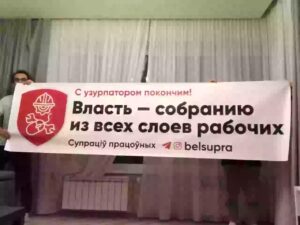
Supratsiwlenine pratsownykh, ISA supporters in Belarus, argues that the call for Lukashenko to go and all political prisoners to be freed needs to be linked with demands for an end to privatisation, the contract system and pension reforms, as well as the restoration of free and quality health care and education. With the working class at the head of this struggle, this would be the basis for forming a mass workers’ party with a socialist programme, presenting candidates in coming elections as well as convening a constituent assembly at which elected representatives of all working people can decide how Belarus should be governed democratically in the interests of the working class, a democratic, independent and socialist Belarus as part of a wider federation of democratic socialist states.
What next?
During the last few months, the situation could have developed in a number of ways.
The first option is the defeat of Lukashenko and the dismantling of his regime. This would have been quite possible if the mass movement had had a real leadership, based on the working class and using strikes as a key part of its strategy. But even without such leadership, if the regime had continued the violence of the first days after the election, it could have ignited anger to the point that no amount of repression could have stopped the spread of the protests. This could have led to a spontaneous overthrow of the regime, as happened, for example, during the “Arab Spring”, in Egypt.
Naturally, we are not advocates of the “the worse, the better” approach. Only those who do not trust the working class can hope that the violence of the regime will provoke the people into action. It is quite possible that such violent actions of the regime could also lead to the complete destruction of the protests, as happened in Kazakhstan in 2011 after the massacre of the striking oil workers in Zhanaozen.
Mass struggle such as that which has taken place in Belarus over the past four months never develops in a linear fashion. It has its ups and downs. It is obvious that now there is a period of ebb. This will be a temporary phase, and how long it will last will depend on further events. Lukashenko seems to be preparing to change the constitution and even suggests he may resign himself after the changes are adopted. Most likely, the weekly demonstrations may continue in some form for some time, attracting the most determined activists.
A certain element of demoralization and tiredness can be expected to emerge. But this should not be a cause for despair. It actually gives activists time to reflect on what happened, to better organize and prepare for the next stage. This should be done with the understanding that the Belarusian society will not return to its previous state, the masses will remember how they resisted the regime for months.
The role of socialists in the “democratic” revolution
The opposition elite limited the protest to democratic demands for “fair elections”, ignoring the need for social and economic change. The liberal opposition speaks about the interests of the nation and the need to unite the people, but by this they mean that they lead, while the rest passively support the policies they want to pursue. In particular, the policy of the liberal opposition, which recommends that any worker willing to strike to inform the management about this, leading to their immediate sacking, is criminal, as it takes the best worker activists out of the factories when they should stay to organize the other workers. The workers’ movement must not fall into this trap. Instead, left-wing forces should offer Belarusian protesters a socialist alternative to the failed tactics of liberals and capitalism, and do everything possible to assist the independent organization of the workplaces.
Unfortunately, the Belarusian left has been very weak, and its position severely mistaken. Anarchists from the ‘Pramen’ group uncritically tail-end the liberals with the argument “first, we will remove Lukashenko and only then will start to move the leftist agenda to the masses”. Others, such as Pavel Katarzewski, a leader of the “Just World” party which presents itself as left social democratic, simply capitulated into inaction in early September when the movement was at its very peak. Stalinists and neo-Marxists from the various “Marxist circles” cowardly capitulated before this mass movement, with childish, ultra-left excuses such as “the left should not participate because liberals have taken the lead in the protest”.
The task of socialists in such situations is to argue for workers to realize the necessity for self-organization and to take the leading role in the protest. Only the self-organization of the workers can enable us to defeat capitalism and only it can ensure the introduction of the most progressive form of democracy.
We need to avoid the sectarian error of thinking that workers are only in the big factories. New sections of society have joined the working class. Medical workers have placed themselves at the forefront of struggle, students have organized to express their solidarity with the working class. Workers in the transportation and information sectors have the ability to stop the economy effectively if they are organized.
At the same time, it is often said about the Belarussian protests that they have a “female face,” every Saturday there have been the Womens’ marches. We should not forget that most of the working class are women. The percentage of working women in Belarus, as well as women with second jobs, is higher than in Russia or Ukraine, while women today have lower wages than men. We need to make every effort to ensure maximum unity of the working class, by ensuring these issues are taken up in the struggle.
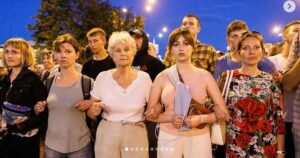
The task of socialists in the coming period is to carry an understanding of our socialist and revolutionary political program to the working class. We need to take up the demands for the complete dismantling of Lukashenko’s dictatorship, with a transition to workers’ democracy on the basis of planning the economy to improve living conditions, and the demand that all factories and large enterprises in the country be placed under the control and management of workers’ organizations.
The strategic task of the immediate period in Belarus, a period of agitation, propaganda and organization, in the words of Leon Trotsky: “consists in overcoming the contradiction between the maturity of the objective conditions for the revolution and the immaturity of the proletariat and its vanguard (the confusion and frustration of the older generation, the inexperience of the younger). We must help the masses, in the process of their daily struggle, to find a bridge between their present demands and the program of the socialist revolution. This bridge must encapsulate a system of transitional demands which proceed from today’s conditions and today’s consciousness of the broad strata of the working class and invariably lead to the same conclusion: the conquest of power by the proletariat.”
From this follows an understanding of the challenges we, as revolutionary socialists, face in the period ahead, during which the protest movement is not likely to reach its former peak of activity, and therefore offers the opportunity to prepare for the next phase. In fact, the more time there is to prepare, the better. However, as the global crisis grips the world, the tasks will become more urgent.
Perhaps in Belarus, more than in any other country, revolutionary socialists face a “double challenge”. We need to build a workers’ movement, and at the same time a revolutionary political organization, a party.
We need to help the organization of strike committees and fighting trade unions in the workplaces, so that the work collectives are organized independently of the liberal opposition elites which always try to subordinate workers interests to their own.
As this process develops, and under the hammer blow of events it could happen quickly, class consciousness, an awareness of how the working class is exploited by capitalism will grow. It is necessary to carry our program openly and directly to these collectives, using a transitional approach, exposing the class interests of the liberal elite and ensuring that the working class has a political, a socialist programme capable of taking society forward as the dictator is forced out and capitalism overthrown.
At the same time, we need to focus primarily on attracting people from those strata of the working class and proletariat, especially the youth, who are in the forefront of the struggle against the regime and the system of capitalism itself, such as those who participate under progressive demands in the protests, in strikes, in courtyard gatherings. We do this with the aim of building a cadre-based revolutionary socialist organization independent of the elite, that will be capable of arming future movements with a strategy and revolutionary socialist programme capable of ensuring victory.
For now, the protests are on the wane, but the anger of the Belarusian people at the regime has not disappeared. Participation in the regular demonstrations has become more risky, as repression has been stepped up and the marches smaller — it is no longer possible to have an open political intervention in these activities. For this reason, it is necessary to temporarily transfer the work to the workplaces, to make contact with and have dialogue with the protest-minded work collectives.
While doing that we will concentrate on the tasks of party-building, attracting new people, cultivating a political (theoretical and contemporary) understanding, developing our cadres armed with a perspective, a program and demands ready to intervene energetically when the next phase of this movement inevitably develops.

